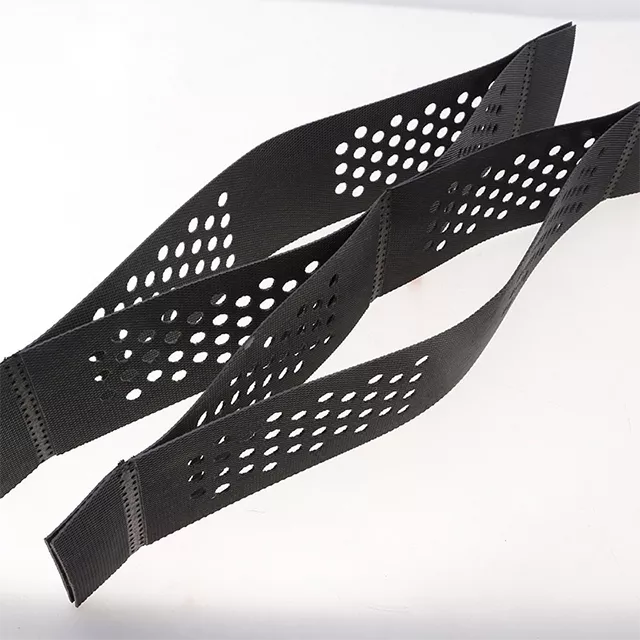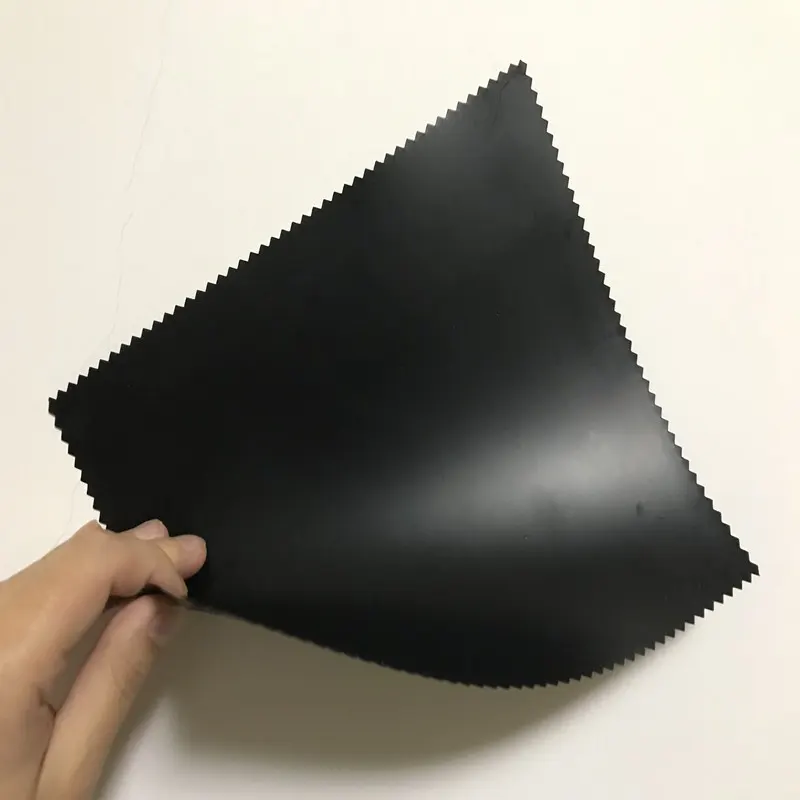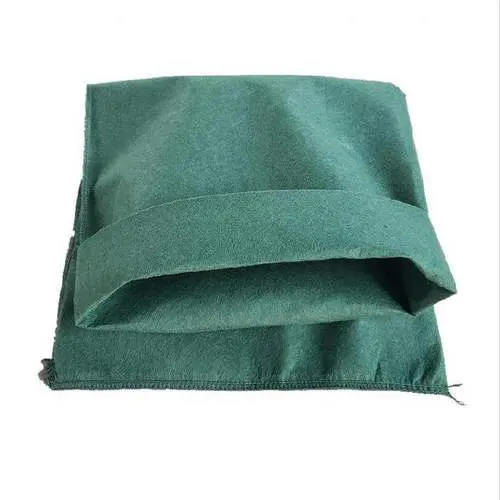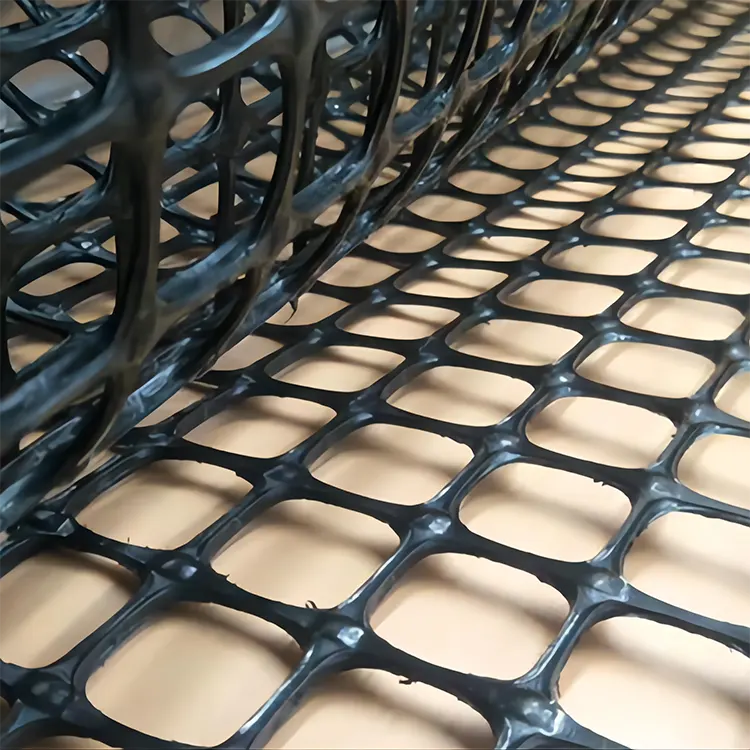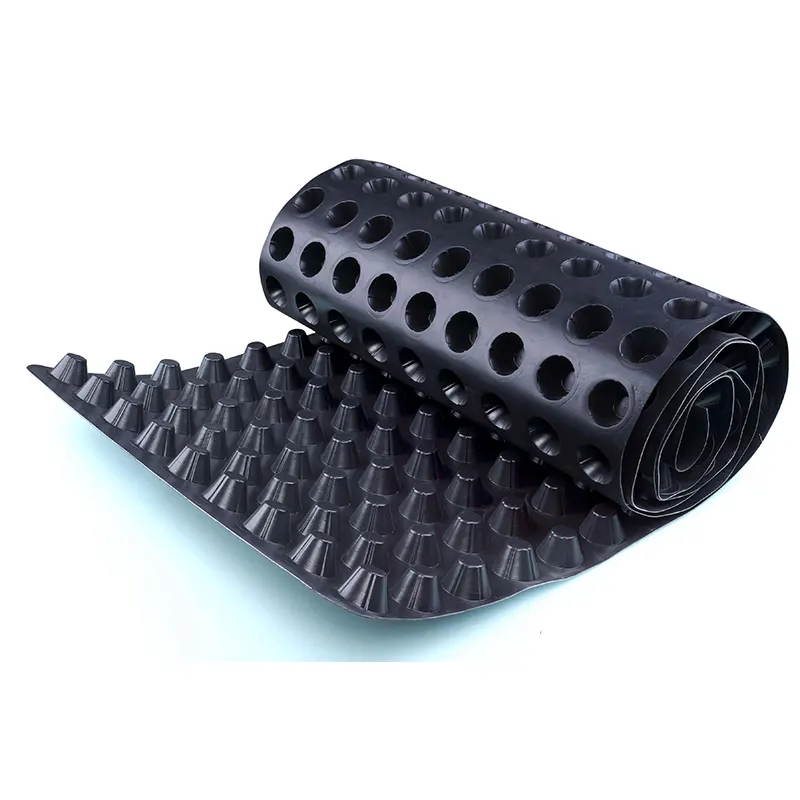- Description
3D erosion control mats, also known as three-dimensional geotextile mats or three-dimensional vegetation slope protection nets, are three-dimensional mesh mats made from polymers (such as polyethylene and polypropylene) through a special process. They resemble a thick, elastic "netting" or "loofah" and are structured in two layers:
Bottom Base Layer: A flat, high-strength, biaxially stretched mesh provides foundational support and stability, preventing overall structural deformation.
Upper Net Layer: A loose, chaotic, three-dimensional net with a large cavity and surface area.
This unique structural design not only strengthens the soil but also provides a stable environment for plant growth, ultimately achieving an ecological slope protection and greening effect by combining engineering and vegetation measures.
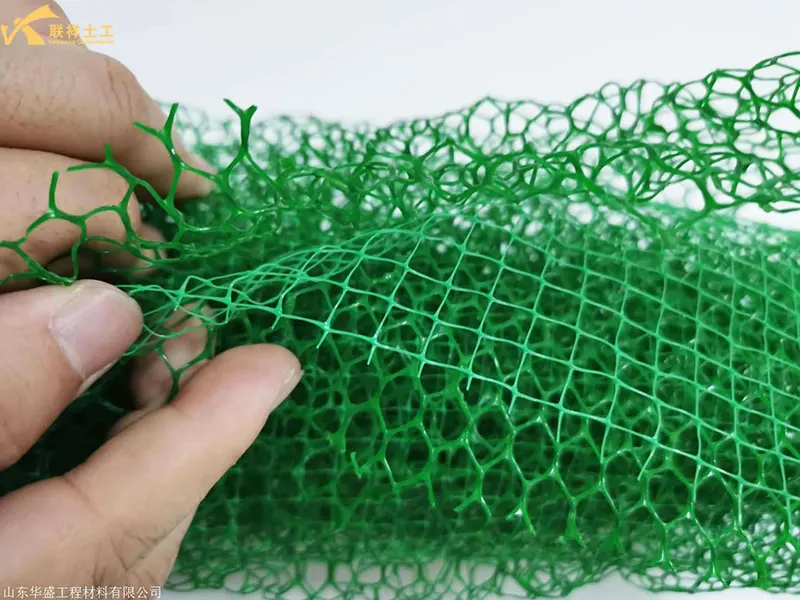
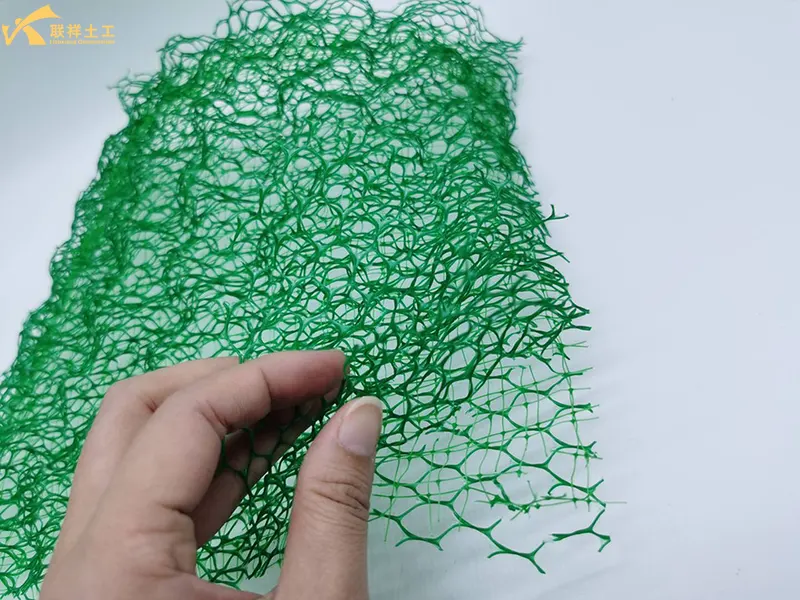

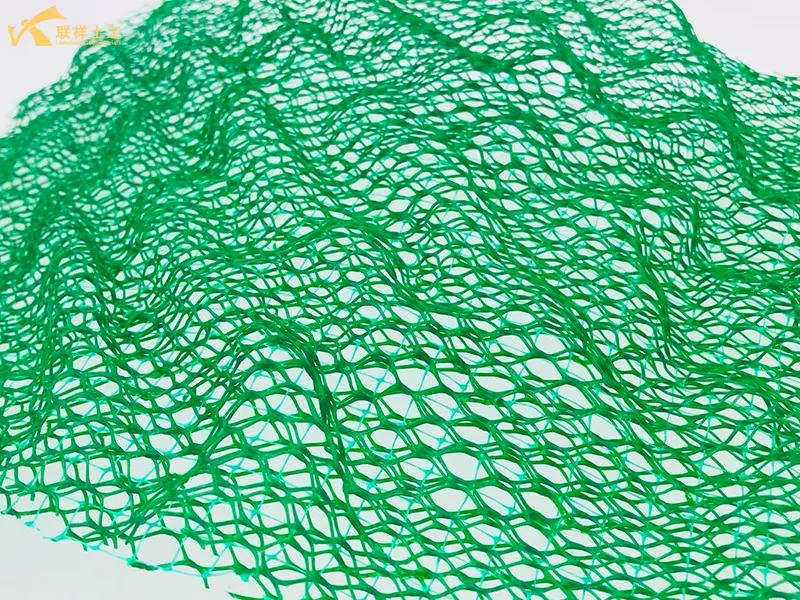
I. Main Features and Advantages
- 1. Soil Moisture Retention: The three-dimensional net securely holds soil and seeds within its cavities, preventing soil erosion caused by rainwater. Furthermore, its complex structure effectively reduces soil evaporation, maintaining soil moisture and promoting seed germination.
- 2. Promotes Plant Growth: The netting provides support and climbing space for plant roots, encouraging them to penetrate through the mat and penetrate deep into the base soil. The netting then interweaves with the matting, forming a strong, highly tensile-strength "composite protective layer."
- 3. Strong Erosion Resistance: Before vegetation fully covers the slope, the netting itself disperses the impact energy of raindrops and slows surface runoff, effectively protecting against wind and rain erosion. Once the vegetation is established, the two elements work synergistically to achieve even greater protection.
- 4. Effective Greening: Providing an ideal growth base for plants, it enables rapid, efficient, and long-lasting greening, resulting in significant ecological benefits.
- 5. Simple and Cost-Effective Construction: The lightweight material is easy to transport and install. Compared to traditional rigid protective structures such as mortared stone and concrete slope protection, it offers lower overall costs and requires less maintenance.
- 6. High Water Permeability: The open mesh structure does not affect groundwater infiltration, helping to maintain slope stability and the surrounding ecological environment.
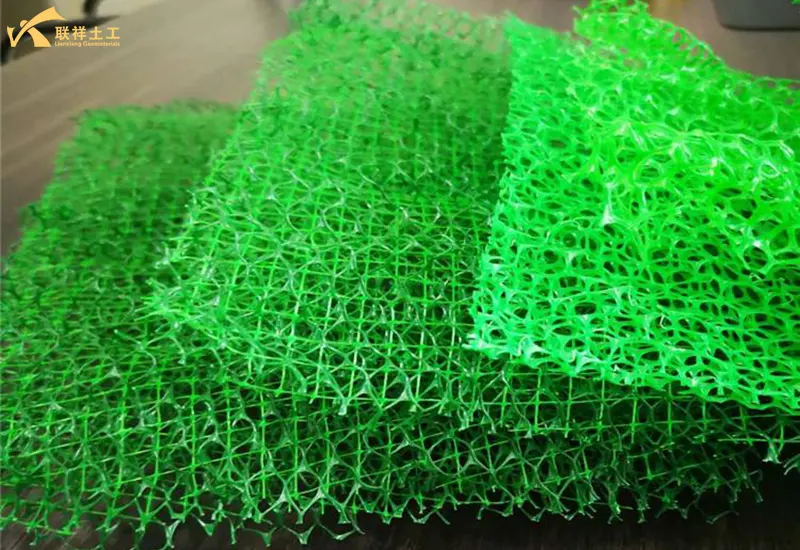
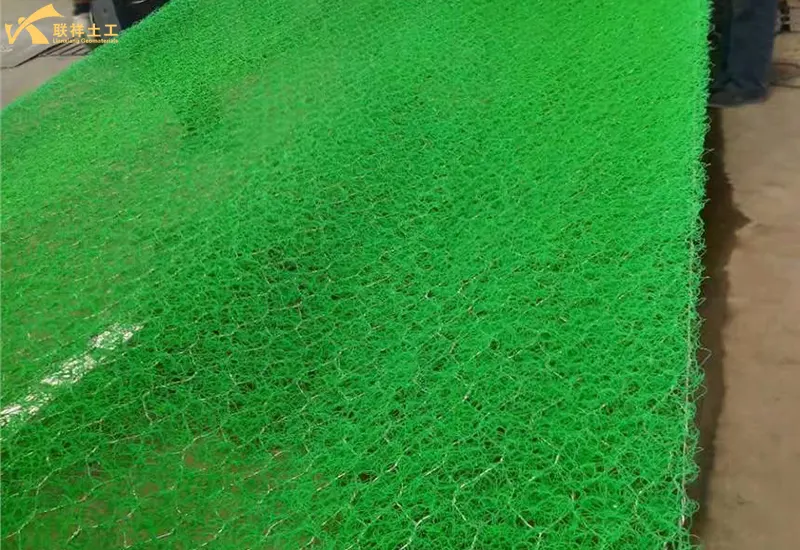
II. Main Application Areas
The core applications of 3D erosion control mats are slope protection and ecological greening, particularly suitable for the following scenarios:
1. Highway and Railway Roadbed Slope Protection:
- Used for embankment and cutting slopes to prevent soil erosion and even collapse caused by rainwater erosion.
- Replacing or reducing the use of hard slope protection (such as cement mesh) to achieve green corridor construction.
2. Riverbank and Dam Slope Protection:
- Protecting riverbanks, reservoir slopes, and canal slopes from water erosion and wind and wave erosion.
- Restoring the ecological environment of riparian zones and providing habitats for aquatic and terrestrial organisms.
3. Mine Ecological Restoration:
- Used for greening steep rock slopes, such as mine dumps, tailings dams, and mining incisions.
- Combined with soil seeding technology, it can create conditions for plant growth on soilless or barren rock surfaces.
4. Landscape and Municipal Engineering:
- Used for greening slopes, rockeries, and courtyards in parks and golf courses, preventing soil erosion and enhancing environmental beauty.
- Used for base protection and drainage in rooftop gardens.
5. Other Applications:
- Stadiums requiring shelter and greening, such as stadiums, airports, and military facilities.
- Ecological Restoration in Fragile Areas: Used for desertification control and vegetation restoration in arid and semi-arid regions, promoting plant growth by conserving water and sand.
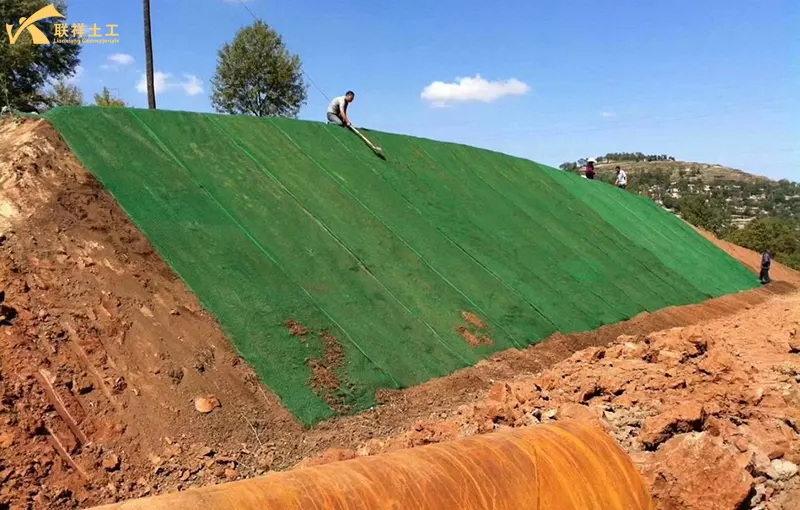
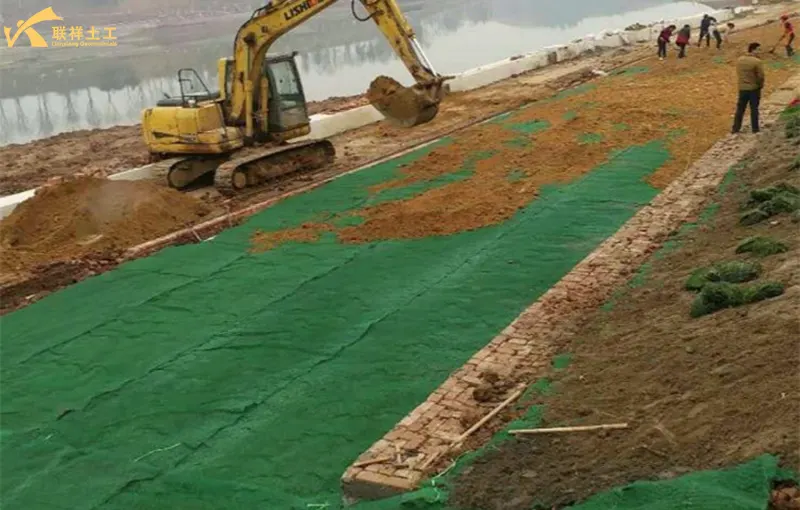
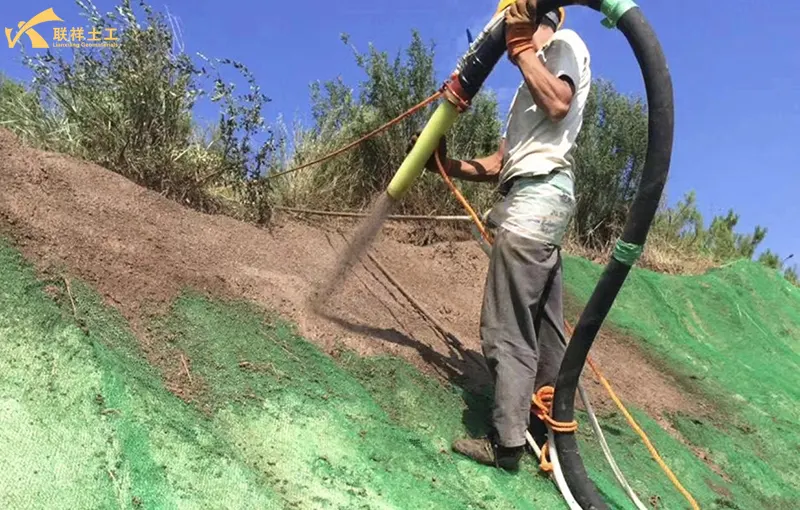
III. Typical Construction Process (Taking Slope Greening as an Example)
- 1. Slope Preparation: Clear debris and debris from the slope and smooth the surface to provide a good foundation for laying the mesh mat.
- 2. Laying the Mesh Mat:
- Unroll the 3D mesh along the slope from top to bottom, with the mesh wrap facing up.
- Adjacent mesh rolls must overlap (usually ≥10cm) and securely fasten the mesh mat to the slope using anchors such as U-shaped nails, wooden stakes, and rebar.
- 3. Covering/Additional Soil: Depending on soil fertility, evenly cover the mesh mat with planting soil (which may be mixed with fertilizer, water-retaining agents, etc.). Use a rake or other tool to fill the mesh bag with soil until the cavities are completely filled and the bag is completely covered.
- 4. Sowing: Use manual broadcasting or hydraulic spraying to evenly spray grass seeds, shrub seeds, and a mixture of adhesive, fertilizer, and water onto the slope.
- 5. Covering and Maintenance: After sowing, cover the ground with materials such as non-woven fabric to retain moisture and heat, promoting seed germination. Regular watering and topdressing, including other maintenance measures, should be performed until the vegetation grows lushly and forms a stable cover.

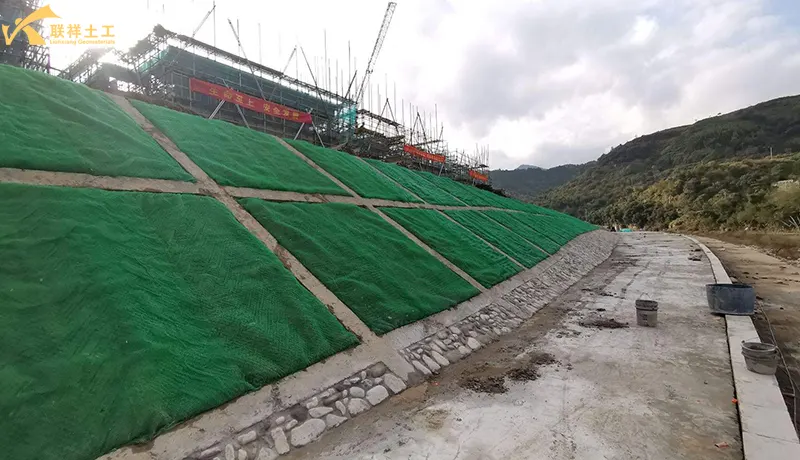
IV. Summary
3D erosion control mats are highly effective environmental engineering materials that cleverly integrate mechanical reinforcement with ecological greening. They address the challenge of establishing stable vegetation in harsh conditions (such as steep slopes, poor soil, and high erosion risk). They are a key technical means of realizing the concept of "lucid waters and lush mountains are invaluable assets" and promoting ecological civilization. Its applications range from large-scale infrastructure projects to detailed garden landscaping, with long-lasting and eco-friendly effects.

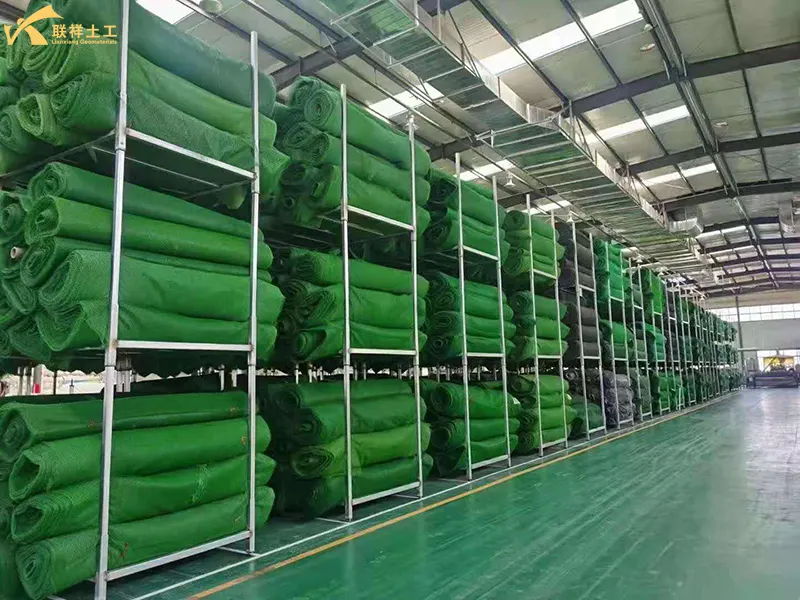
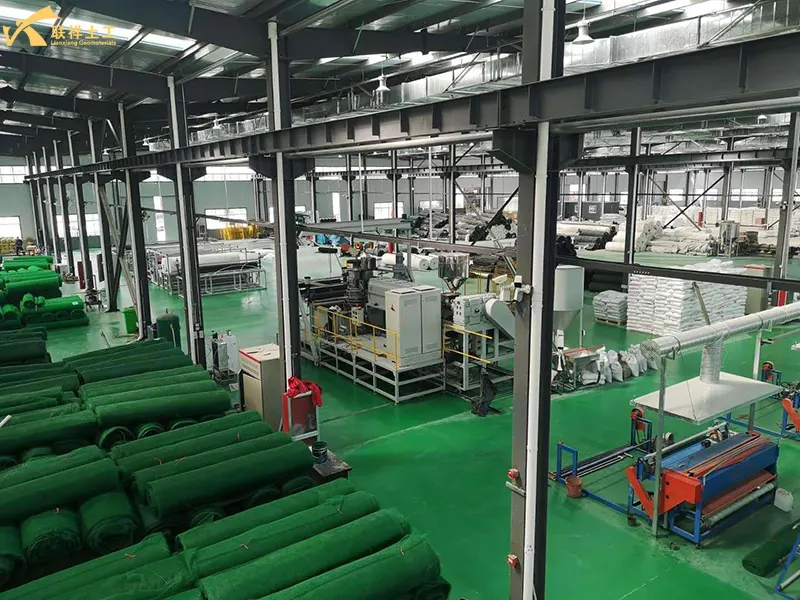
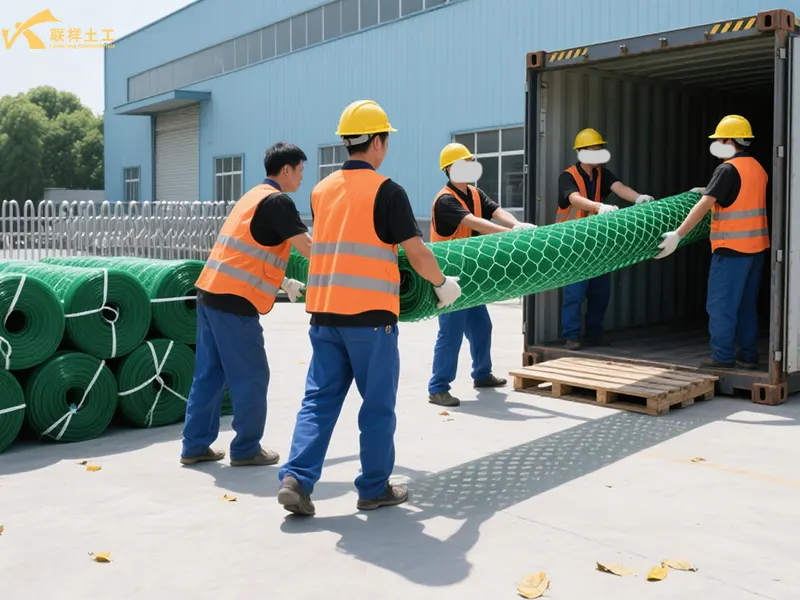
Contact
-
WhatsApp
-
E-MailE-Mail:admin@lianxiangcn.com
-
WeChatWeChat:18554180188


